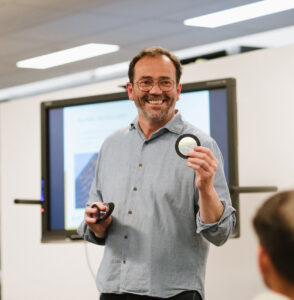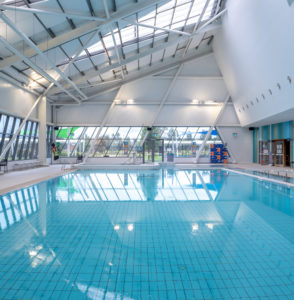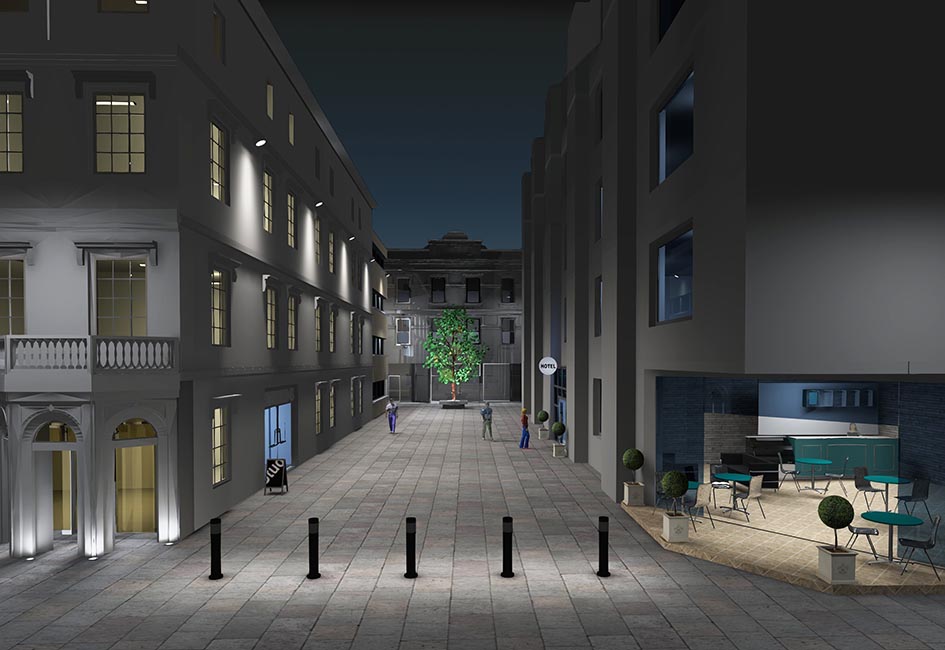
LEARN
Design Clinic: How To Light A Pedestrian Street
After decades of designing streets purely for drivers, city planners are now making urban areas more “friendly” for pedestrians.
View Article
Words by: WE-EF
One method is to close streets for vehicle traffic. A big advantage of this approach is that the space can be opened up. Pavements and sidewalks constrain people to walk in narrow lanes. This can lead to a lot of stress especially when you are in a hurry and everyone else is looking at their phone rather than where they are going!
The absence of vehicles also means that the lighting can be designed not only for function but also to improve the look of the space and attract people to it. Cafes can have tables outside. Shops can display goods in the street.
At the same time, planners are also trying to reduce the amount of street clutter – all those signs, columns, advertisement panels, directions, flashing beacons etc. This philosophy tends towards solutions which do not use lighting columns.
If this is your first time designing the lighting for a public space, you will find that there is plenty of guidance available. For the basic functional lighting, you can refer to EN 13201 or ANSI/IESNA RP-8. Both the Society of Light and Lighting and the ILP have excellent documents showing ways of improving the appearance of a public space whilst meeting the regulatory standards. Functional and attractive lighting aren’t mutually exclusive concepts; with some thought, you can achieve both!
In this Design Clinic, we have used the approach of mounting floodlights high up on the buildings. All of them are from the FLC200 family of symmetrical floodlights. Just one floodlight type was used to produce three completely different looking installations.
Another common approach in many countries is to use a catenary system where the lanterns are suspended from wires. The support wires are fixed either to opposite buildings or widely spaced columns. WE-EF can also provide catenary solutions.
Never forget that vertical illumination on people’s faces is as important as the horizontal, at ground level. It is always a good idea to run a quick calculation showing vertical illumination at about 1.5m (5ft) above ground.
Always consider maintenance. There is no point in having LEDs or long-life lamps if the luminaires are easily vandalised and have to be replaced. Of course, the luminaires must also be easy to replace.
Our street is 10m wide, 40m long and the buildings are four storeys high.
CTY150 bollards are used in all the options. Similarly, on the pillars in the foreground, there are ETC329 inground uplights used in all three scenes.
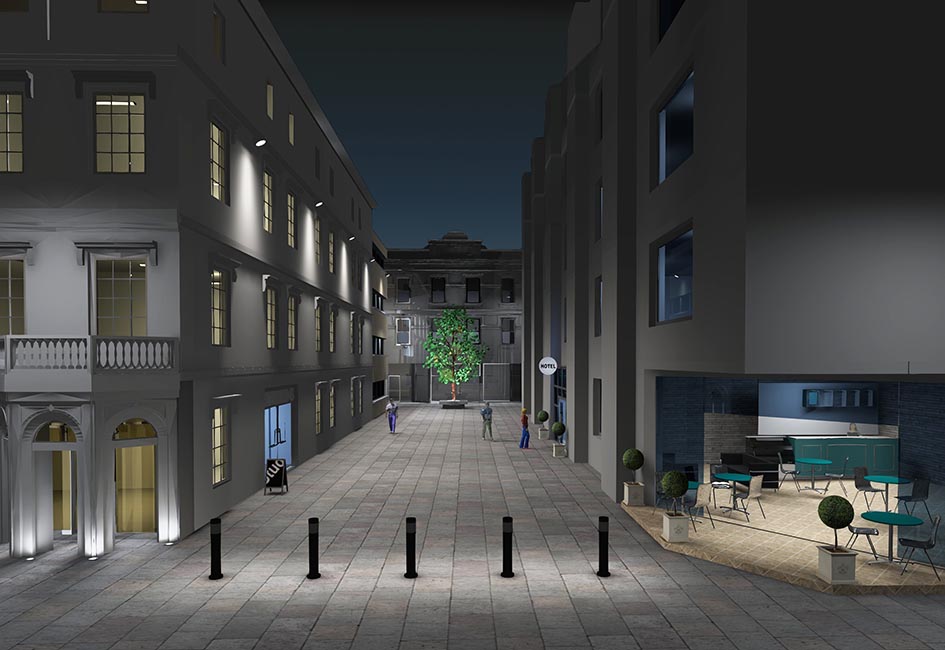
1. Inviting
This is a simple scheme and uses just five floodlights mounted on one side of the street. One aspect that is interesting about this scheme is that it will almost certainly meet all the local country regulations in terms of uniformity and illumination. This can be achieved because the FLC200 has a wide range of symmetric beam options.
There is good vertical illumination on the pedestrians and so you can recognise friends, or foe, from a long distance. Again, the high uniformity ensures there are no dark shadows. Good uniformity is also beneficial for people who have any visual impairment.
The one disadvantage of a single-side mounted scheme is that sometimes people are in their own shadow. This does not normally arise due to reflection from the walls and spill light from the shops and cafes.
You can see in the foreground that the entrance to the street uses CTY150 bollards to prevent vehicles, but not cyclists or pedestrians, entering.
The body of the CTY150 is made of marine-grade die-cast aluminium. The symmetrical light distribution is provided by an indirect optical system through a vandal resistant, IK10, polycarbonate lens.
Tech Spec A
Luminaires: FLC240 LED
Pros: High uniformity with vertical and horizontal illumination
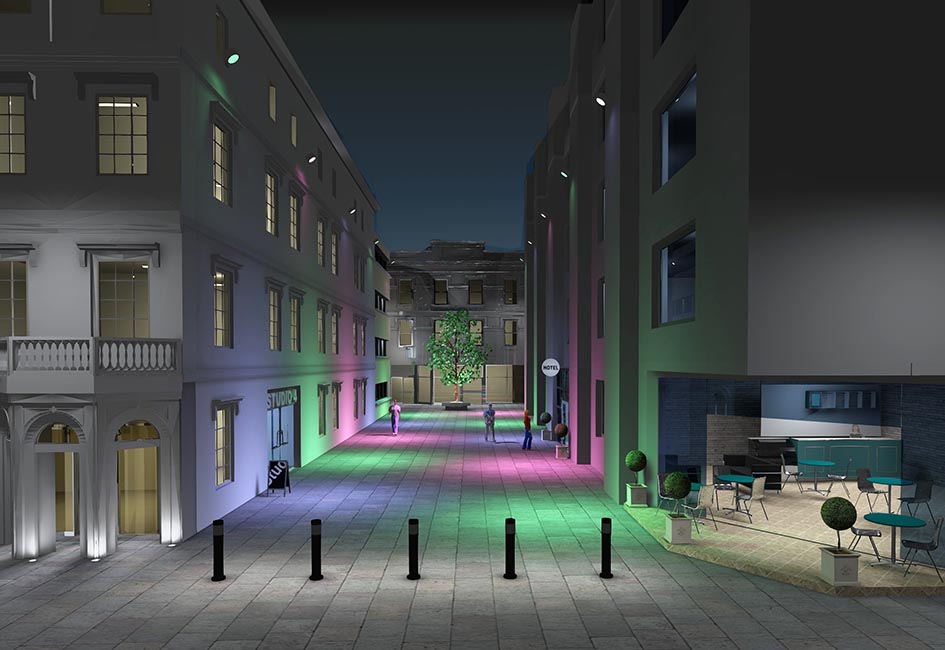
2. Colour Change
Many city authorities nowadays want to add colour to the urban environment. Here is just one example of what can be done. A useful feature of the FLC200 Colour Change series is that it is RGBW. This enables you to not only have almost any colour you want but also to have a “pure” white. It can also brighten saturated colours.
Apart from the colour, this option also uses floodlights on both sides of the street. This enables you to have pools of light along the pavement edges. You could highlight a particular shop or entrance, for example. Aiming the floodlights almost straight down means the sides of the buildings are brightly illuminated.
We have used a Medium beam but a Narrow beam is also available. This would give a much more dramatic and intense appearance to the space. It would be your choice which you prefer.
In the foreground, on the left of the image, are ETC329 inground uplights. This is an extremely tough, stainless steel, luminaire which can withstand a 5 tonne load and is impact resistant to IK10+. The safety glass lens has the option of an Anti-slip ceramic coating. The 5.5W LEDs provide a soft, diffuse light on the pillars of the building.
Tech Spec B
Luminaires: FLC260-CC
Pros: Almost any colour you want.
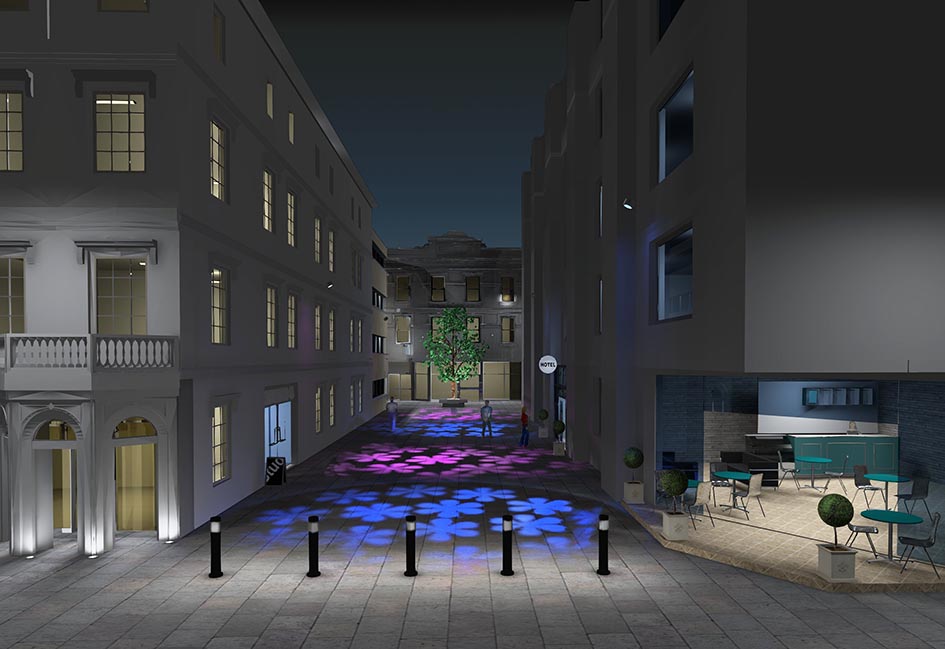
3. Drama
A big advantage of this floodlight is that you can use it for so many applications. This option has a completely different approach and illuminates the street using a gobo projection. We have used a fairly simple repeating pattern but nowadays gobos can be obtained with almost any shape you wish.
As well as static colours, the FLC projector has the option of CMY colour mixing. Zoom spot and polygon framing options are also available.
Again, as in option A, we have used the vandal resistant CTY150 bollard. The higher local illumination provided by the bollards marks a boundary between the main street and the more dramatic pedestrian area.
Tech Spec C
Luminaires: FLC260-CC
Pros: Where you want to create an impact.
